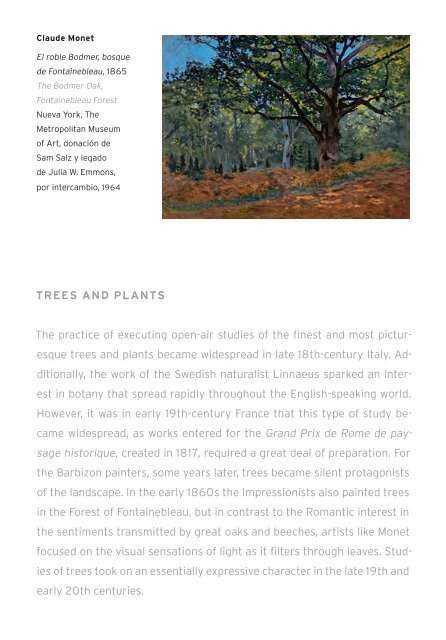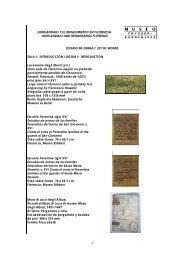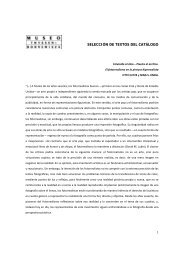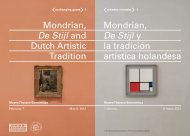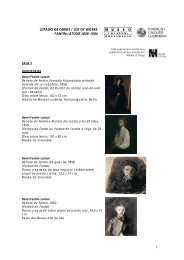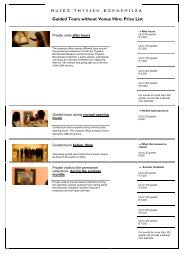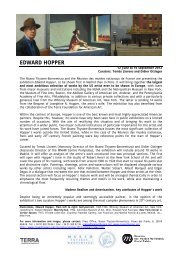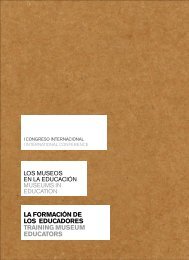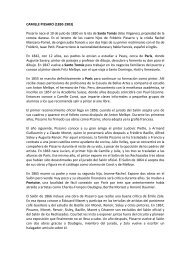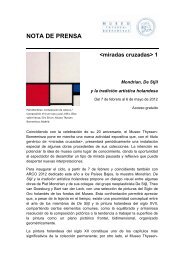folleto - Museo Thyssen-Bornemisza
folleto - Museo Thyssen-Bornemisza
folleto - Museo Thyssen-Bornemisza
Create successful ePaper yourself
Turn your PDF publications into a flip-book with our unique Google optimized e-Paper software.
Claude Monet<br />
El roble Bodmer, bosque<br />
de Fontainebleau, 1865<br />
The Bodmer Oak,<br />
Fontainebleau Forest<br />
Nueva York, The<br />
Metropolitan Museum<br />
of Art, donación de<br />
Sam Salz y legado<br />
de Julia W. Emmons,<br />
por intercambio, 1964<br />
TREES AND PLANTS<br />
The practice of executing open-air studies of the finest and most picturesque<br />
trees and plants became widespread in late 18th-century Italy. Additionally,<br />
the work of the Swedish naturalist Linnaeus sparked an interest<br />
in botany that spread rapidly throughout the English-speaking world.<br />
However, it was in early 19th-century France that this type of study became<br />
widespread, as works entered for the Grand Prix de Rome de paysage<br />
historique, created in 1817, required a great deal of preparation. For<br />
the Barbizon painters, some years later, trees became silent protagonists<br />
of the landscape. In the early 1860s the Impressionists also painted trees<br />
in the Forest of Fontainebleau, but in contrast to the Romantic interest in<br />
the sentiments transmitted by great oaks and beeches, artists like Monet<br />
focused on the visual sensations of light as it filters through leaves. Studies<br />
of trees took on an essentially expressive character in the late 19th and<br />
early 20th centuries.


